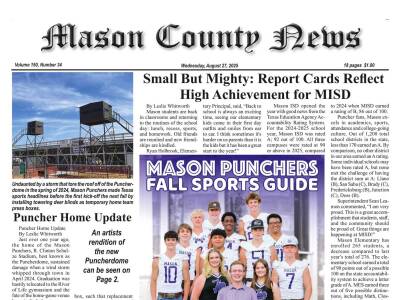Dr. Kent Rylander, retired Texas Tech Professor, author of the book, “The Behavior of Texas Birds”, and a friend of mine, tells a fascinating story about a classic experiment in animal behavior. The researchers removed an egg from under a sitting goose and placed it next to the nest. The goose got up, extended her neck so that she could reach over the egg with her bill, and then pulled her neck back, pulling the egg back toward the nest. This motion was repeated until the egg was back in the nest.
But then the researchers noted that if the egg rolled away from the goose and down a hill, the goose continued the motions of raking the egg back into the nest without the egg even being there. So once the motion of retrieving the egg was begun, it continued even though it wasn’t accomplishing anything. They then discovered that if they placed other smooth round objects near the nest, (including a volleyball!), that the goose would retrieve those also.
The conclusions from this work are that the egg retrieval is an instinctive or innate behavior triggered by the sight of an egg outside the nest. They also found that this behavior only applied to adult, female geese on a nest and was not observed in any other setting. Any egg-like object next to a nest triggered in the female goose a set of actions that were neither “learned” nor necessarily even “logical”, but were clearly inherited. (The female goose never saw her mother do this.)
There are numerous other examples of animals displaying actions that are triggered by some specific event or occurrence in the environment. Here are a few other examples:
Male stickleback fish have a red belly, and they are aggressive in defending their territory, chasing all other male sticklebacks away. When researchers made a model of a male stickleback without the red belly and placed it in the territory of other males, it was ignored, but when they made many other models that didn’t look anything like a stickleback, or even a fish for that matter, but which had red lower parts, all of those models were attacked.
Similarly, a male robin will attack a bundle of feathers with a red middle even though it doesn’t even look like a bird, but a stuffed juvenile robin without the red breast will be ignored. In both of these cases, it is the red color that triggers the response, not the similarity in form, shape or size.
This raises another question. Can learning override this innate response to certain triggers? “Learning” in this case is defined as the modification of behavior with experience. The answer appears to be yes, at least in certain cases.
Gull chicks, just hatched “know” to crouch and freeze whenever they hear an adult gull sound an alarm call. These same chicks, when first hatched, also display the crouching response to almost any moving objects above them, which is essential for avoiding predators.
In time, however, the chicks “learn” that certain bird shapes they see flying above them are harmless and they cease responding when, for instance, a duck or a songbird flies overhead. But they still respond when the shape they see above belongs to a predator. It turns out that most predators show a shorter head and neck profile than most other birds, and so it is only the “predator” shapes that trigger a response.
But it is more complicated than that even. Researchers fashioned a “bird shape” to fly above the chicks that had a shape which, when flown above the chicks in one orientation appeared to have a short head and a long tail, and it triggered the crouch response. But when the same shape was flown over the chicks in the other orientation, it appeared to have a long neck and a short tail (like ducks), and the chicks ignored it! By the way, turkey and pheasant chicks respond the same way.
So the next time you see a young squirrel burying an acorn, ask yourself, Is this a response to some trigger like the length of the days or the presence of acorns, or did he learn this from his mother? He wasn’t born when his mother buried her last acorn in the fall. Did he learn it from other squirrels?
Nature, like most of life, offers more questions than answers. That is why it is so interesting to observe and study.
Until next time…
By the way, I will not be at Riverside on Friday the 27th. I will be attending a memorial service for my late friend Bill Lindemann. He will be sorely missed.
Jim Stanley is a Texas Master Naturalist and the author of the books “Hill Country Ecology,” “Hill Country Landowner’s Guide” and “A Beginner’s Handbook for Rural Texas Landowners.” He can be reached at [email protected]. Previous columns can be seen at www.hillcountrynaturalist.org.


